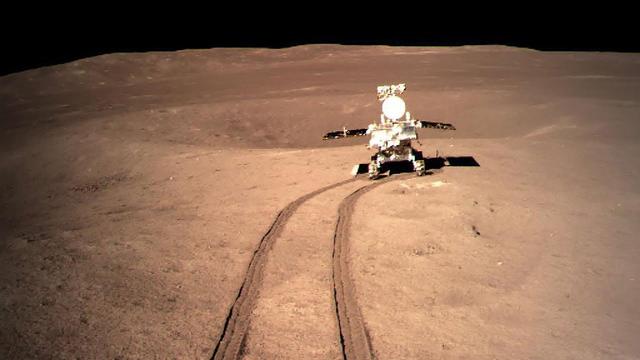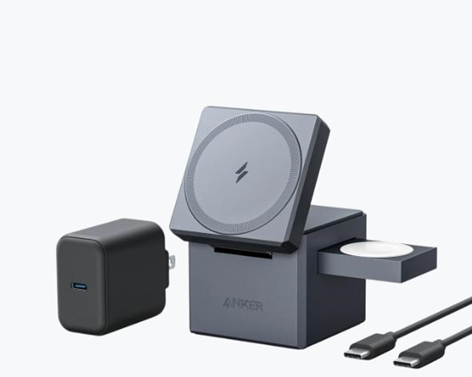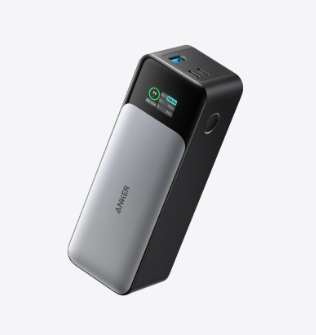China Lunar Exploration Project
Overall plan
Starting from 1999, the Commission of Science, Technology and Industry for National Defense organized relevant departments to systematically demonstrate the scientific goals of lunar exploration. In 2000, the Chinese Academy of Sciences passed the review of the scientific goals. Scientific goals began to develop payloads. Since 2002, the Commission of Science, Technology and Industry for National Defense has organized scientists and engineers to study the technical solutions of the lunar exploration project. After more than two years of hard work, we have deepened the scientific goals and implementation methods, implemented the technical plan for the lunar exploration project, established a nationally coordinated engineering system, and proposed a lunar exploration project based on my country’s existing capabilities.
In January 2004, the State Council approved the establishment of the lunar exploration project and named it the Chang'e Project. In February 2006, the State Council promulgated the "National Medium and Long-term Science and Technology Development Plan Outline (2006-2020)", which clearly included the "Manned Spaceflight and Lunar Exploration Project" as one of the country's 16 major scientific and technological projects.
The first phase of the lunar exploration project
The mission of the first phase of the lunar exploration project is to realize the exploration around the moon. The Chang'e-1 satellite was launched on October 24, 2007, and it has been in orbit for 16 months of effective detection. In March 2009, it successfully controlled the moon collision, realizing that China's self-developed satellite entered the lunar orbit and obtained the full moon map.
The second phase of the lunar exploration project
The task of the second phase of the lunar exploration project is to achieve soft landing on the lunar surface and automatic inspections. Chang'e-2 was launched on October 1, 2010. As a pilot satellite, it has carried out a number of technical verifications and carried out a number of expansion tests for the second phase of the work. The mission has now been completed. The Chang'e-3 probe was launched on December 2, 2013, and the moon fell on December 14, carried out a lunar surface inspection and survey, and obtained a large amount of engineering and scientific data. The Chang'e-3 lander is still in operation, making it the man-made spacecraft with the longest working hours on the lunar surface. The Chang'e-4 mission is the backup of Chang'e-3, and it is organizing demonstrations, optimizing engineering missions and scientific detection targets.
The third phase of the lunar exploration project
The task of the third phase of the lunar exploration project is to realize unmanned sampling and return. The project was established in 2011. On October 24, 2014, my country implemented the third phase of the lunar exploration project reentry and return flight test mission to verify the key technology related to the return of the return to the earth at the second cosmic speed. On November 1, the service compartment of the aircraft was separated from the returner, and the returner landed smoothly in the predetermined area. The test mission was a complete success. Later, the service module continued to carry out expansion tests, and successively completed the expansion test of a large elliptical orbit at apogee of 540,000 kilometers and a perigee of 600 kilometers, detection of the L2 point around the Earth-Moon, and returning to the lunar orbit for related tests of the Chang'e-5 mission. The service cabin will continue to carry out expansion test tasks in the future.
Project introduction
Project overview
Combined Atlas (2 photos)
The launch of artificial earth satellites, manned spaceflight and deep space exploration are human The three major areas of space activities. Returning to the moon, developing lunar resources, and establishing a lunar base have become an inevitable trend and hot spot of competition in world space activities. Carrying out lunar exploration is a major move for my country to take the first step in deep space exploration in space. The realization of lunar exploration will be a breakthrough in my country's aerospace deep-space exploration. The moon has become the focus of future space powers competing for strategic resources. The moon has a variety of unique resources that can be exploited and utilized by humans. The unique minerals and energy on the moon are an important supplement and reserve to the earth's resources and will have a profound impact on the sustainable development of human society. China's lunar exploration is my country's independent exploration and observation of the moon, also known as the Chang'e Project. After the State Council formally approved the establishment of the lunar exploration project, the leading group of the lunar exploration project named the project "Chang'e Project" and the first moon-orbiting satellite as "Chang'e-1". The "Chang'e-1" satellite was developed by the China Academy of Space Technology. It is mainly used to obtain three-dimensional images of the lunar surface, analyze the distribution characteristics of related material elements on the lunar surface, detect the thickness of the lunar soil, and detect the space environment of the earth and the moon. Chang'e-4 is the backup star of Chang'e-3. According to the three-step strategy of China's lunar exploration project, "circumnavigation", "return" and "return". And plans to establish a research base on the moon.Project goals
1. Obtain 3D images of the surface of the moon. The basic geomorphic structural units on the lunar surface are divided, and an outline map of lunar geology and structure is initially compiled to provide a reference for the subsequent optimization of soft landings.
2. Analyze the distribution characteristics of the content of useful elements and the types of substances on the surface of the moon. Detect useful elements on the lunar surface, and initially compile the lunar surface distribution map of each element.
3. Detect the characteristics of the lunar soil. Detect and evaluate the thickness of the lunar soil layer on the surface of the moon and the amount of helium-3 resources in the lunar soil.
4. Exploring the Earth-Moon space environment. Record the original solar wind data and study the impact of solar activity on the earth and moon space environment.
Luan Enjie, deputy director of the National Defense Science, Technology and Industry Commission, director of the National Space Administration, and commander-in-chief of the lunar exploration project, introduced that the lunar exploration satellite, carrier rocket, launch site, measurement and control and ground application are composed of five major systems. The lunar exploration engineering system will achieve the following five engineering goals by then:
⊙Develop and launch China’s first lunar exploration satellite;
⊙Preliminarily master the basic technology of lunar exploration;
p>
⊙Scientific exploration of the moon was carried out for the first time;
⊙Preliminary construction of aerospace engineering system for lunar exploration;
⊙Accumulate experience for the follow-up engineering of lunar exploration.
The third phase of the lunar exploration project mainly includes the following five scientific goals:
1. Investigation and research on the lunar appearance and lunar background of the exploration area
The in-situ detection and analysis instrument carried by the robot can obtain information on the morphology of the detection area, measure the chemical composition and physical properties of minerals in the selected area of the lunar surface, analyze the lunar structure background of the detection area, and provide systematic regional background data for sample research, and Establish a connection between laboratory data and lunar surface detection data, deepen and expand the research on lunar exploration data. The main contents of the investigation and research tasks of the lunar appearance and lunar background in the exploration area include:
1) Lunar surface morphology detection and lunar structure analysis in the exploration area;

2) Detection The characteristics, structure and thickness of the lunar soil in the area and the structure detection of the shallow part of the lunar lithosphere (1~3km);
3) In-situ analysis of the mineral/chemical composition of the exploration area.
2. Lunar soil and lunar rock samples are collected and returned to the ground
The lunar surface is covered with a layer of lunar soil. The lunar soil contains a variety of lunar rocks and mineral fragments, and records the history of impacts on the moon's surface and solar activities; lunar rocks and minerals are the main source of information for studying lunar resources, material composition, and formation and evolution. The collection of lunar soil profile samples and lunar rock samples is of great significance to the investigation of lunar surface resources, lunar material composition, lunar physics research, lunar surface processes and solar activity history. The main tasks of collecting and returning lunar soil core clear rock samples to the ground include:
1) Based on the survey of regional morphology and lunar morphology, use the borehole sampling device on the lander to drill Take lunar soil core;
2) Use the robotic arm on the lander to collect lunar rock/lunar soil samples;
3) Based on the on-site composition analysis, select the sampling device Collect lunar samples;
4) Both the lander and the lunar rover carry out selective sampling, and the lunar rover can choose to collect multiple types of samples in more areas, and finally return it to the return cabin.
3. Laboratory system research on lunar soil and lunar rock samples and evaluation of some important resource utilization prospects
Laboratory system research on lunar soil and lunar rock samples and some The main content of the assessment tasks for the utilization prospects of important resources includes:
1) Organize laboratories in various related fields across the country to conduct systematic research on the lunar samples returned to the earth, such as material composition (rocks, minerals, chemical composition, Laboratory analysis of trace elements, isotope and age determination), physical properties (mechanics, electricity, optics, acoustics, magnetism, etc.), materials science, nuclear science and other related disciplines;
2) The moon contains Abundant energy and mineral resources, evaluation of important resource utilization prospects are the leading work for mankind to use lunar resources, and it can make necessary preparations for the development and utilization of lunar resources and the construction of future lunar bases for mankind; according to the characteristics of the resources contained in the moon , Determine the content of He-3, H, ilmenite and other important resources in lunar samples, and study their occurrence forms;
3) Develop the adsorption mechanism of He-3 and other solar wind particles and the richness of ilmenite Research on the genetic mechanism of integrated mine;
4) Carry out laboratory simulation research on the extraction of He-3, H and other gas resources.
4. Research on the formation and evolution of lunar soil and lunar crust
The formation of lunar soil is one of the most important processes on the lunar surface, and it is a window for studying solar activity on a large time scale. The evolution of the moon basically stopped 3.1 billion years ago, so the formation and evolution of lunar surface rocks and minerals can reflect the early development history of the lunar crust; the size, distribution, density and age of impact craters on the lunar surface record the complete history of small celestial bodies hitting the moon. It is the best information carrier to compare the early evolution of the earth and catastrophic events.
5. Moon-based space environment and space weather detection
Solar activity is the main factor that induces changes in the space environment and space weather, and has a significant impact on human activities such as aerospace. The space environment and space weather detection in the third phase of the lunar exploration project includes the following contents:
1) Space environment detector
Record the flux of cosmic rays, high-energy particles and low-energy particles of the sun Analyze and study the changes in solar activity and the earth-moon space environment with energy spectrum; detect the composition and flux of solar wind to provide a basis for estimating lunar soil maturity and helium-3 resources.
2) Very low frequency radio observations
Place a very low frequency interference observation array composed of two antenna elements on the lunar surface for long-term mapping and time-varying of the sun and interplanetary space Research and establish the world's first long-term facility capable of observing VLF electromagnetic radiation.
Engineering plan
As early as 1994, Chinese aerospace science and technology workers conducted a study on the necessity and feasibility of lunar exploration activities, and completed the study on the technical scheme of lunar exploration satellites in 1996. In 1998, the key satellite technology research was completed, and in-depth demonstration work has been carried out since then. After 10 years of deliberation, it is finally determined that China's entire lunar exploration project will be divided into three phases: "winding", "falling", and "returning".
The first step is "orbiting", that is, launching my country’s first lunar exploration satellite, breaking through the flight technology to extraterrestrial bodies, realizing the lunar exploration satellite flying around the moon, and obtaining the three-dimensional surface of the moon through remote sensing detection. Image, detect the content of useful elements and material types on the surface of the moon, detect the characteristics of the lunar soil, and detect the space environment of the earth and the moon during the flight of the lunar exploration satellite to the moon. The first lunar exploration satellite "Chang'e-1" was launched on October 24, 2007.
The second step is "falling", and the time is set for the second half of 2013. That is, launching the lunar soft lander, breaking through the landing technology of extraterrestrial bodies, and carrying the lunar patrol surveyor to carry out the lunar soft landing and automatic patrol survey to detect the topography and geomorphology, geological structure, chemical and mineral composition of rocks and the lunar surface in the landing area. To carry out on-site detection and sampling analysis of moon rocks, conduct solar-earth-moon space environmental monitoring and moon-based astronomical observations. The specific plan is to use a patrol vehicle that safely landed on the lunar surface and an automatic robot to detect the composition of rocks and minerals in the landing area, determine the heat flow at the landing site and the surrounding environment, and conduct high-resolution photography and on-site detection or sampling analysis of lunar rocks. The site selection for establishing a lunar base provides the chemical and physical parameters of the lunar surface.
The third step is "return", which will be between 2014 and 2020. That is, launching the lunar soft lander, breaking through the technology of returning to the earth from extraterrestrial bodies, automatically sampling the lunar samples and returning to the earth, conducting analysis and research on the samples on the earth, and deepening the understanding of the origin and evolution of the earth-moon system. The goal is lunar patrol survey and sampling return.
Project plan
The lunar exploration project is the first phase of the lunar exploration project in my country, that is, the development and launch of the first lunar exploration satellite. The star will orbit the moon and send the acquired detection data back to the ground. The project consists of five major systems: lunar exploration satellites, launch vehicles, launch sites, measurement and control, and ground applications. It has been determined that the lunar exploration satellites will mainly use the "Dongfanghong-3" satellite platform, the carrier rocket will use the "Long March-3A" rocket, the launch site will use the Xichang Satellite Launch Center, the detection system will use the existing aerospace measurement and control network, and the ground application system will be provided by China The Academy of Sciences is responsible for development.
The specific plan is that the "Long March 3A" rocket will take off from the Xichang launch center and send the "Chang'e-1" satellite into the geosynchronous transfer orbit to achieve the separation between the stars and the arrows. The satellite finally enters the south of the moon. It runs in a circular orbit at the North Pole and probes the moon. The height of the orbit from the lunar surface is 200 kilometers.
The "Chang'e-1" satellite with a design life of 1 year, carries a variety of scientific instruments such as stereo cameras, imaging spectrometers, laser altimeters, microwave radiometers, solar cosmic ray detectors, and low-energy ion detectors. Explore the moon. During its missions around the moon, it mainly obtains three-dimensional images of the lunar surface, analyzes the distribution characteristics of the content of useful elements and material types on the lunar surface, detects the thickness of the lunar soil, and detects the space environment of the earth and the moon. Among them, the first three items are projects that have not been carried out abroad, and the fourth item is my country's first acquisition of space environmental parameters beyond 80,000 kilometers. In addition, the United States has explored 5 kinds of resources on the moon, and my country will detect 14 kinds of resources, of which the important target is the helium-3 resource on the moon. Helium-3 is an important fuel that is safe, efficient, clean and pollution-free. According to statistics, helium-3 on the moon can meet the power supply needs of mankind for more than 10,000 years. The content of helium-3 in the lunar soil can reach 5 million tons.
The Chang'e Project is a completely independent innovation project, and it is also the first lunar exploration activity implemented in my country. The project was initiated in January 2004 and was successfully launched into the air at Xichang Satellite Launch Center on October 24, 2007. Lunar exploration is a very complex and high-risk project. So far, humans have launched a total of 122 lunar probes with 59 successes, with a success rate of 48%. The success rate of China's Long March 3A carrier rocket is 100%.
Participants
Ouyang Ziyuan, Chief Engineer of China Lunar Exploration Project;
Hao Xifan, Deputy Director of Lunar Exploration Engineering Center;
Zhu Mincai, Director of the Lunar Exploration Engineering Measurement and Control Communication Command;
Satellite system chief commander and chief designer Ye Peijian, deputy chief designers Sun Zezhou, Sun Huixian;
Long March 3A carrier rocket deputy chief Commander Jin Zhiqiang;
Chen Minkang, the overall chief designer of the Long March 3A carrier rocket;
Liu Jianzhong, the overall deputy chief designer of the Long March 3A carrier rocket;
Latest: Cable Broadband
Next: The First Affiliated High School of Central China Normal University








